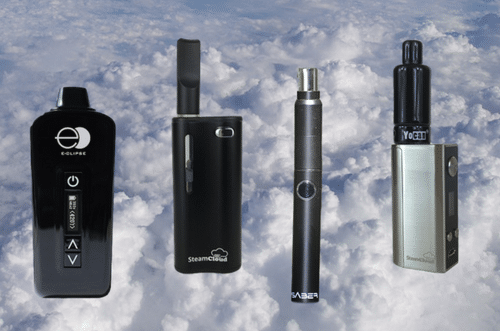In recent years, vaporizers have become increasingly popular among medical and recreational cannabis consumers. And for good reason too. They’re pocket-sized and super discreet. While there are hot components inside your vaporizer, since you are not using lighters/torches to decarboxylate your product, you can’t burn yourself with open flames. And, when used properly, you don’t get combustive smoke in your lungs.
The world of vaping has a massive selection of devices with a variety of functions, styles, and uses, which can be quite overwhelming. In this article, we examine the workings of vapes so you’re able to choose the right device with confidence.
How Vaporizers Work
Every vaporizer has an atomizer, a chamber, a battery, a mouthpiece and a button to press for use. The atomizer is the heating element that warms up when the battery is activated. Once your cannabis flower or oil is loaded in the chamber, heating the product volatizes the cannabinoids and terpenes in your flower or oil, producing an inhalable vapor.
Convection heating takes place as soon as you press the fire button. In the process, heat gets transferred to the chamber without the product being in direct contact with the heating element. This reduces the risk of combustion and allows you to vape immediately, though it may take time to heat up.
The conduction method works by having the heating element (i.e. coil, metal plate) come into direct contact with the product. You may lose a sizeable fraction of your material due to increased thermal degradation. Induction takes place by heating up the wick through magnetic fields, which allows you to better control the temperature of your device. Although not as common as convection and conduction, it may not be long until induction technology is standard, especially since it leaves zero chance of producing unwanted combustion.
Vaping material
Dry Herb – The trichomes in cannabis get heated up, rather than burned by a flame. There are two classes of dry herb vaporizers, based on their method of heating: convection and conduction.
E-liquids or oils – E-liquids and oils can be vaped in the same pen, however, there are some manufacturers that produce vaporizers geared towards a specific type of product, or a specific manufacturer of vaporizer, as with pods. Generally, vaporizers equipped with a glass chamber and an atomizer (with wicks and coils) are used with these products. There are also disposable vape pens
Concentrates – This kind of cannabinoid-rich product provides a purer form of cannabinoids, and more frequently these days, of cannabinoids and terpenes. You’ll need to add products like waxes, budder, shatter, or live resin into a refillable pen, like a Kandy Pen, or equivalent. A little goes a long way. Some vaporizers even have dual function for both dry flower and concentrates.
In the end, choosing a vape pen will ultimately boil down to one thing – your wallet. This is a competitive industry, so it’s truly a case of you get what you pay for.
Image credit: https://nyvapeshop.com/blog/vape-pens-differences-similarities-for-vaping/












